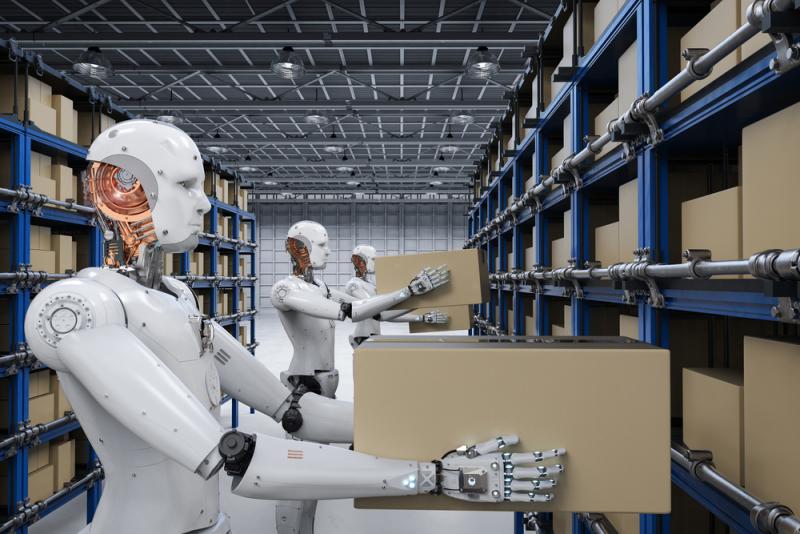The warehouse robotics market is estimated to be valued at US$ 6.1 Bn in 2023 and is expected to exhibit a CAGR of 11.4% over the forecast period 2023 to 2030, as highlighted in a new report published by Coherent Market Insights.
Market Overview:
Warehouse robotics involves the use of autonomous mobile robots (AMRs) and robotic arms for automating material handling and warehouse operations. They are commonly used for palletizing, depalletizing, sorting, picking, packaging, and transporting boxes and items. The key benefits of warehouse robotics include improved inventory management and accuracy, optimized productivity and reduced costs, enhanced workforce safety, ability to handle heavy and awkward items, and flexible integration into existing warehouse infrastructure.
Market Dynamics:
The growth of the warehouse robotics market is primarily driven by the growing need for automation across distribution centers and warehouses to optimize operations and enhance productivity. McKinsey estimates that about half of existing activities in warehouses could potentially be automated mainly due to rapid developments in robotics, sensor technology, advanced analytics and control software. Additionally, the labor crunch in the warehousing sector owing to low unemployment rates combined with demand surge from e-commerce is compelling warehouse owners to deploy robotics solutions. However, the high upfront capital costs remain a key challenge while deploying robotics at scale requires careful integration into existing warehouse infrastructure. Collaborative robots or 'cobots' are expected to witness increased traction as they enable robot-human collaboration and are safer to deploy in factory environments. The rising adoption of Industry 4.0 technologies such as IoT, AI and big data analytics is also boosting the market growth.
SWOT Analysis
Strength: Warehouse Robotics offer three main strengths - improved productivity, reduced labor costs, and increased accuracy. Robots can work 24/7 without breaks, increasing throughput. Their use eliminates wages and benefits for redundant human tasks. Robotic systems complete picks and placements with precise repeatability and no errors.
Weakness: High upfront costs and lengthy return on investment timelines are weaknesses. The machines require sizable capital expenditures and can take 1-3 years to generate savings equal to their prices. Technical disruptions may also halt operations until repairs are made.
Opportunity: Growth of e-commerce presents opportunities for increased robot usage. Online shopping is rising globally, necessitating faster fulfillment from distribution centers. Automating warehouse workflows with robots can boost order volumes warehouses can sustainably handle.
Threats: Technology advances may shorten robot lifecycles and used equipment could cannibalize new sales. Continued improvements in robot capabilities and falling prices threaten to make existing systems obsolete more quickly. Competing automation approaches like autonomous mobile robots also vie for warehouse upgrade budgets.
Key Takeaways
The Global Warehouse Robotics Market Size is expected to witness high growth, exhibiting CAGR of 11.4% over the forecast period, due to increasing automation of warehouses for fast order fulfillment. With projections showing e-commerce rising to 25% of all retail sales by 2030, robotics solutions are key to supporting the volumes warehouses must process.
Regional analysis: North America dominate currently due to large investments by leading e-tailers and third-party logistics providers. However, Asia Pacific is poised to grow fastest as Chinese and other regional e-commerce giants automate heavily. Japan and South Korea also have well-established robotics industries supplying materials handling equipment.
Key players operating in the Warehouse Robotics are Locus Robotics, ABB Limited, Honeywell International Inc., Fanuc Corporation, Geek+ Inc., TGW Logistics Group GMBH, Omron Adept Technologies, Swisslog Holding AG (KUKA AG), Singapore Technologies Engineering Ltd (Aethon Incorporation), Yaskawa Electric Corporation (Yaskawa Motoman), InVia Robotics Inc., Fetch Robotics Inc., Syrius Robotics, Grey Orange Pte Ltd, Hangzhou Hikrobot Technology Co. Ltd and Toshiba Corporation.
Explore more information on this topic, Please visit -
https://www.pressreleasebulletin.com/warehouse-robotics-market-share-and-demand-analysis/
